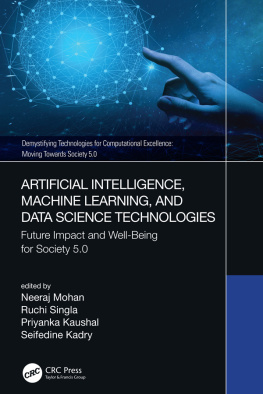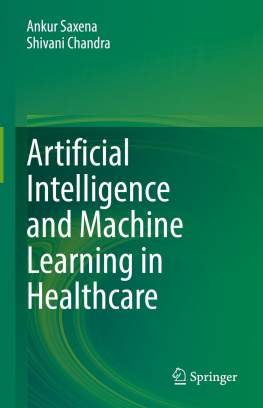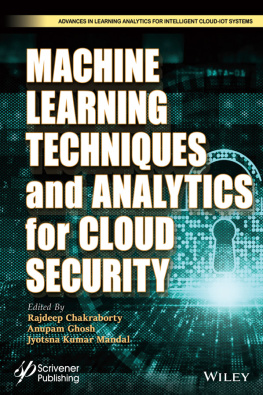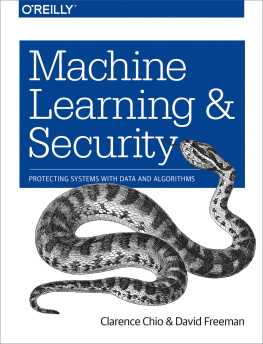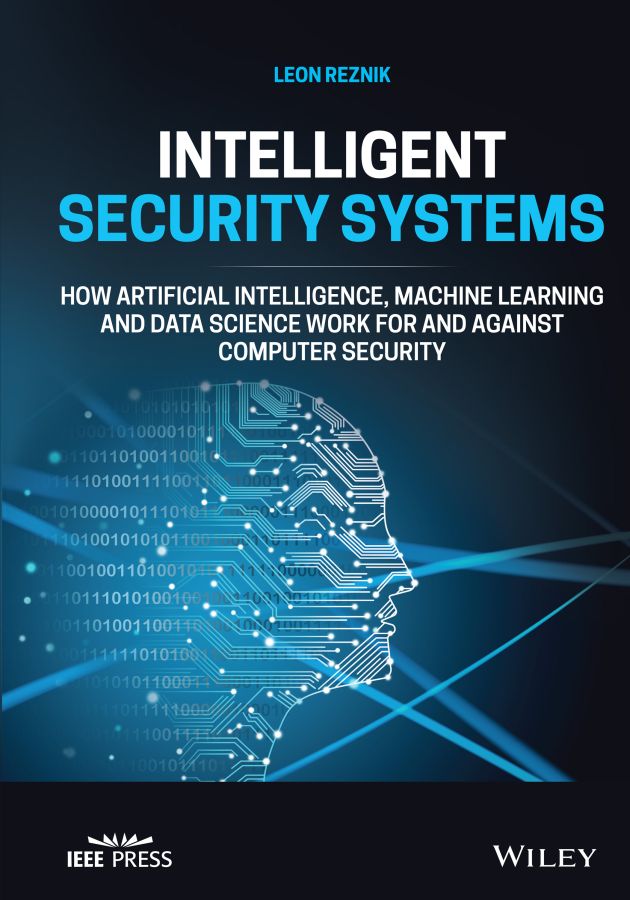
Table of Contents
List of Tables
- Chapter 1
- Chapter 2
- Chapter 3
- Chapter 4
- Chapter 5
- Chapter 6
List of Illustrations
- Introduction
- Chapter 1
- Chapter 2
- Chapter 3
- Chapter 4
- Chapter 5
- Chapter 6
Guide
Pages
IEEE Press
445 Hoes Lane
Piscataway, NJ 08854
IEEE Press Editorial Board
Ekram Hossain, Editor in Chief
| Jn Atli Benediktsson | Xiaoou Li | Jeffrey Reed |
| Anjan Bose | Lian Yong | Diomidis Spinellis |
| David Alan Grier | Andreas Molisch | Sarah Spurgeon |
| Elya B. Joffe | Saeid Nahavandi | Ahmet Murat Tekalp |
Intelligent Security Systems
How Artificial Intelligence, Machine Learning and Data Science Work For and Against Computer Security
Leon Reznik
Rochester Institute of Technology, Rochester, New York, USA


Copyright 2022 by The Institute of Electrical and Electronics Engineers, Inc.
All rights reserved.
Published by John Wiley & Sons, Inc., Hoboken, New Jersey.
Published simultaneously in Canada.
No part of this publication may be reproduced, stored in a retrieval system, or transmitted in any form or by any means, electronic, mechanical, photocopying, recording, scanning, or otherwise, except as permitted under Section 107 or 108 of the 1976 United States Copyright Act, without either the prior written permission of the Publisher, or authorization through payment of the appropriate percopy fee to the Copyright Clearance Center, Inc., 222 Rosewood Drive, Danvers, MA 01923, (978) 7508400, fax (978) 7504470, or on the web at www.copyright.com. Requests to the Publisher for permission should be addressed to the Permissions Department, John Wiley & Sons, Inc., 111 River Street, Hoboken, NJ 07030, (201) 7486011, fax (201) 7486008, or online at http://www.wiley.com/go/permissions.
Limit of Liability/Disclaimer of Warranty:
While the publisher and authors have used their best efforts in preparing this work, they make no representations or warranties with respect to the accuracy or completeness of the contents of this work and specifically disclaim all warranties, including without limitation any implied warranties of merchantability or fitness for a particular purpose. No warranty may be created or extended by sales representatives, written sales materials or promotional statements for this work. The fact that an organization, website, or product is referred to in this work as a citation and/or potential source of further information does not mean that the publisher and authors endorse the information or services the organization, website, or product may provide or recommendations it may make. This work is sold with the understanding that the publisher is not engaged in rendering professional services. The advice and strategies contained herein may not be suitable for your situation. You should consult with a specialist where appropriate. Further, readers should be aware that websites listed in this work may have changed or disappeared between when this work was written and when it is read. Neither the publisher nor authors shall be liable for any loss of profit or any other commercial damages, including but not limited to special, incidental, consequential, or other damages.
For general information on our other products and services or for technical support, please contact our Customer Care Department within the United States at (800) 7622974, outside the United States at (317) 5723993 or fax (317) 5724002.
Wiley also publishes its books in a variety of electronic formats. Some content that appears in print may not be available in electronic formats. For more information about Wiley products, visit our web site at www.wiley.com.
Library of Congress CataloginginPublication Data Applied for:
ISBN: 9781119771531
Cover Design: Wiley
Cover Image: AerialPerspective Works/E+/Getty Images
To my family, Alexandra, Dmitry, Michelle, and my students
Acknowledgments
Many organizations and individuals helped this book to appear, including my colleagues, students, editorial staff, family, and friends.
I would like to thank all of you but have to limit the list of names.
Thank you very much:
Adam, Adrian, Adwait, Aileen, Akhil, Akshay, Alex, Alok, Amit, Arpit, Ashwin, Andrew, Andrey, Ankan, Anna, Anthony, Asif, Ayush, Benjamin, Brian, Carl, Chinmay, Christian, Darrell, Devang, Dhaval, Dhivya, Dileep, Dinesh, Dmitry, Elisa, Forum, Gaurav, George, Greg, Howard, Igor, James, Jeffrey, Jeton, Jinesh, Jody, Joe, Josh, Juan, Juliet, Justin, Karl, Karteek, Krishna, Kurt, Maninder, Mansha, Matthew, Michael, Michelle, Milan, Mohammed, Mohan, Ninad, Ninel, Olga, Omar, Parinitha, Parth, Pooja, Praful, Punit, Qiaoran, Raja, Ravina, Renzil, Richard, Rishi, Robert, Rohan, Rohit, Roman, Ron, Sagar, Sahil, Salil, Samir, Sanjay, Sandhya, Saransh, Saurabh, Scott, Sergey, Shashank, Shravya, Simran, Stanislaw, Sudhish, Suraj, Suresh, Swati, Tayeb, Tejas, Utsav, Vanessa, Virendra, and Vladik.
At last but not at least, I want to acknowledge that some research reported in this book was supported in part by the following recent grants provided by:
National Science Foundation (award # ACI1547301),
National Security Agency (award # H98230I7l0200), and
US Military Academy/DoD (award # W911NF2010337).

Introduction
I.1 Who Is This Book For?
This books main goal is to provide help to its readers and users:
- students in computer security, science, engineering, IT and information systemsrelated fields, both undergraduate and graduate, looking for a textbook to gain the knowledge and skills at the intersection of computer security and artificial intelligence, machine learning, and data science domains;
- their instructors at the universities, colleges, and institutions of higher education looking for a textbook and curriculum materials (review and test questions, notes, exercises, slides) to use in developing new and modifying existing courses;
- professionals in the computer security area looking for a reference book to upgrade their skills and better understand intelligent techniques;
- professionals and researchers in the field of artificial intelligence and data science looking for advice on where and how to apply their knowledge and skills in computer security domain.
While readers general background in computing, networking, security, and artificial intelligence is desirable, the book is selfcontained and starts with a review of computer security and intelligent techniques that should provide a sufficient foundation for further study.
I.2 What Is This Book About?
This book aims at helping its readers to better understand how to apply artificial intelligence, machine learning, and data science in the computer security domain. It will introduce readers into the current state of an application of intelligent methodologies in computer security and information assurance systems design. As the design and operation of most of computer security systems and tools are based on an application of intelligent techniques, gaining deeper understanding
Next page




